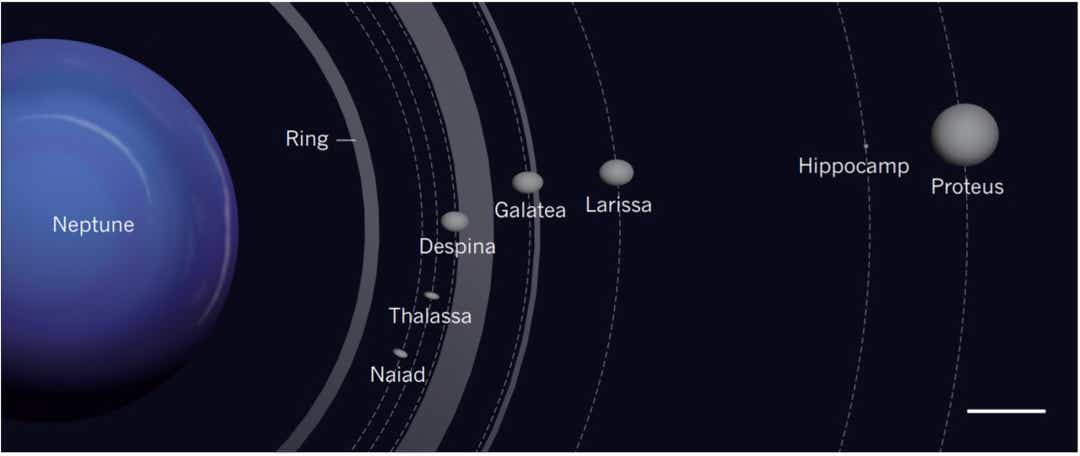A new moon was discovered orbiting Neptune, scientists announced in a study Wednesday, joining the other 13 we already knew about.
The moon, named Hippocamp after the sea creature of Greek mythology, is Neptune's smallest moon, with a diameter of only 21 miles.
Hippocamp orbits close to Proteus, the largest and outermost of the planets' inner moons. The largest moon of Neptune is Triton, in an orbit farther out.
Compared with the planet’s other inner moons, Hippocamp is tiny, "which suggests a violent history for the region," Anne Verbiscer, a University of Virginia astronomer, said in a companion article in Nature.
The moon may have formed from ejected fragments of the larger moon after it was hit by a comet billions of years ago, according to the study. This supports the idea that all of Neptune's seven inner moons were formed and shaped by powerful collisions with comets.

All of the inner moons are thought to be younger than Neptune, having formed relatively soon after the capture of Triton.
"The first thing we realized was that you wouldn't expect to find such a tiny moon right next to Neptune's biggest inner moon," said study lead author Mark Showalter, a SETI astronomer. "In the distant past, given the slow migration outward of the larger moon, Proteus was once where Hippocamp is now."
More: Huge storms spotted on Uranus and Neptune

It's so small that it wasn't detected in 1989 during the Voyager 2 flyby of Neptune. Hippocamp was spotted by astronomers using the Hubble Space Telescope. Showalter and his colleagues discovered it using a special image-processing technique that made Hubble’s cameras extra-sensitive.
More: Astronomers discover 12 more moons orbiting Jupiter, including an 'oddball'
“The authors were actively hunting for moons to add to Neptune’s retinue,” Verbiscer said. She said that unlike Hippocamp, other recent discoveries in our solar system have been serendipitous: Last year, planetary scientists reported the discovery of 12 moons of Jupiter, which were identified during a search for the elusive Planet X that is proposed to lurk in the outermost region of the solar system.
"Applying the techniques that were used to find (Hippocamp) might result in the detection of other small moons around giant planets, or even planets that orbit distant stars," Verbiscer said.
In Greek mythology, the sea monster Hippocamp (aka HIppocampus) often is depicted as having a horse's upper body along with the lower body of a fish.
The study was published Wednesday in the peer-reviewed British journal Nature.
Read Again Neptune new moon: Hippocamp discovered using Hubble Space Telescope - USA TODAY : https://ift.tt/2Nob60hBagikan Berita Ini















0 Response to "Neptune new moon: Hippocamp discovered using Hubble Space Telescope - USA TODAY"
Post a Comment